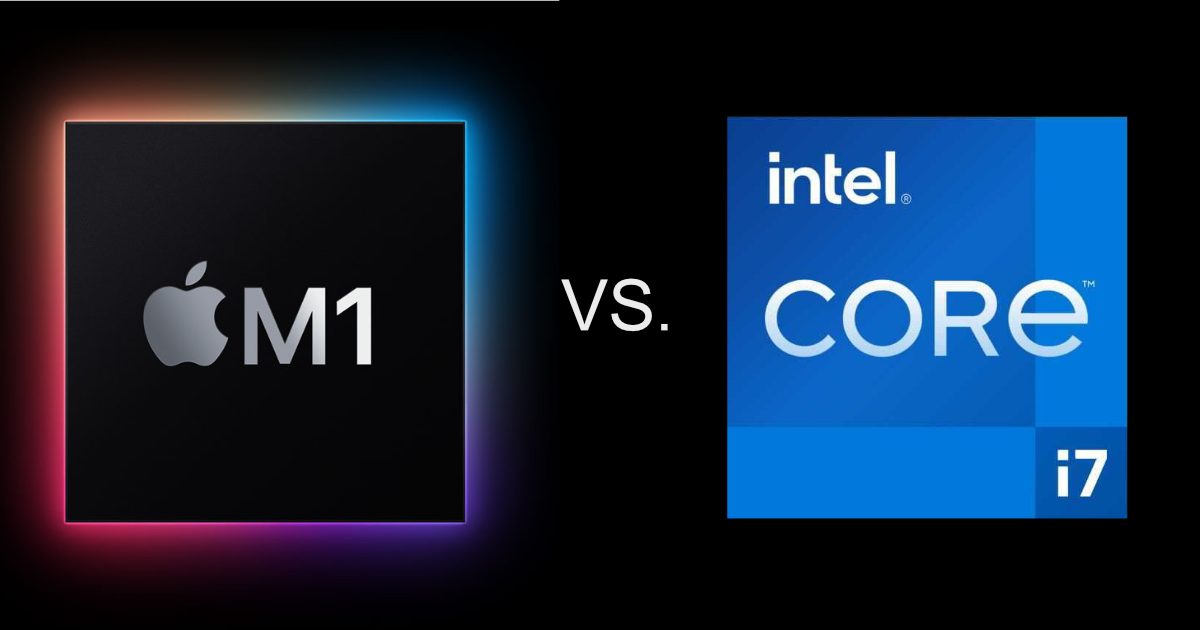Intel is gearing up to compete against not only AMD but also Apple Silicon chips. As per leaked slides from Intel’s roadmap for its 15th generation “Arrow Lake” CPUs, the company aims to compete against Apple’s 14-inch MacBook Pro chips.
Achieving such a lofty target would require Intel to not only outperform Apple Silicon chips in terms of mobile performance but also achieve a level of efficiency that it is not known for. The real battle is performance per watt which Apple’s M1, M1 Pro, and M1 Max chips easily win.

Intel aiming high to beat Apple Silicon by 2023
As per a leaked slide shared by @AdoredTV on Twitter, Intel wants to gain efficiency by using its own expertise alongside TSMC’s 3nm node process. This will allow Intel to bypass its issues with shrinking its own manufacturing process and gain an advantage over the competition. It is important to note that Apple will also be using TSMC’s 3nm process by then, so it will not be exclusive to Intel.
It wasn't a rumour, it was their plan. I talked with Intel engineers working on the project and I was also handed this slide a bit before then. If they are no longer doing TSMC 3nm its a decision made since the video. pic.twitter.com/zr0FojtCv6
— Jim (@AdoredTV) February 22, 2022
With its latest 12th-generation Core H-series Alder Lake processors, Intel has been using a hybrid design similar to Apple’s M1 chips which include a combination of high performance and high efficiency cores. This can allow the system to use the high performance cores only when needed and offload other tasks to high efficiency chips to save power.
Intel had recently claimed that its 12th-generation Alder Lake chips outperform M1 Max, however, the reality was far different when it comes to efficiency and performance per watt. M1 Max, including its GPU, consumed far less power than an Intel chip, combined with a discrete GPU.
Intel’s Core i9 chip can also boost reach 5.0GHz frequency while using up to 115 watts. Not that this is just the power draw of the chip, and does not include graphics, which would add another 60-100 watts to the overall power draw. On the other hand, the maximum power draw for the M1 Max, including its GPU, is 90W, which means that it is unlikely that the Core i9 can provide better efficiency or battery life when a competitive dedicated GPU is added to the package.
Intel had been bitter about Apple ditching its chips and ran a campaign against the Cupertino giant to convince users that its chips are still better. However, the campaign was not very well throughout and receive server backlash online, and even caught Intel scoring its own goals by pointing out flaws in Macs that were still powered by Intel’s chips back then.
Apple’s roadmap, as per various reports, shows that the company will use a 4nm process for M2 chips, and will likely switch to 3nm for M3 chips after 18 months. Whether this means that Intel will be first to market with its 3nm chips is unknown as plans could change again due to COVID-19 and other factors.
Read more:
- Apple’s M1 Max outperforms Intel Core i7-12700H in Geekbench benchmarks
- Apple’s M1 chip is faster than Intel because of improved task scheduling in macOS
- Intel mocks Apple’s M1 Macs and highlights their limitations in new ad campaign
- New Intel CEO mocks Apple as a ‘lifestyle company’, calls staff to deliver better products
- M1 Max vs Nvidia RTX 3080 comparison shows Apple lags in gaming benchmarks
- M1 Pro and M1 Max Geekbench and Cinebench benchmarks show how fast they are [U: GFXbench 5]
- 16-inch M1 Max MacBook Pro is a power house, says professional photographer Austin Mann
- Apple’s M1 Max outperforms AMD Radeon Pro W6900X in Affinity GPU benchmark
- M1 Pro and M1 Max analysis reveals the new chips vastly outperform competitors